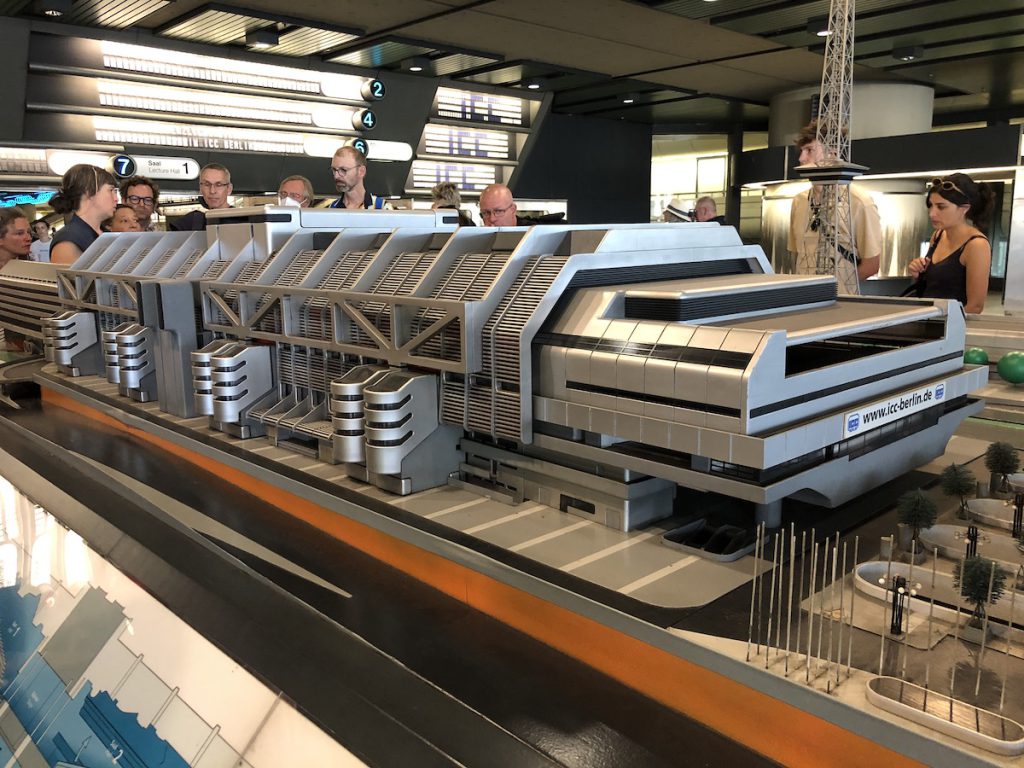
Berlin residents must have felt one step closer to the future in the decade before the Cold War ended.
That’s when a 313-metre-long spacecraft materialized in Westend.
East Berlin was building their Palace of the Republic in the 1970s, and the West’s Congress Hall in the Tiergarten — known as the pregnant oyster for its unfortunate shape — was too small. A competition was held to build a much larger replacement.
I don’t think anyone imagined the winning design by husband-and-wife team Ralf Schüler and Ursulina Schüler-Witte would end up costing almost a billion marks, making it Germany’s largest and most expensive building project since the Second World War.
Construction began on the 313 metre long, 89 metre wide and 40 metre high ICC (International Conference Centre) six years after the first moon landing — a fact you might be able to glean from a glance at its off-world exterior.
The three-level basement supply centre is penetrated by two rows of 13 massive columns with elastomeric bearings on their heads, and rubber-like bodies that block vibrations and sound. Reinforced concrete trusses sit on these, and between them the smaller meeting halls.
That interior “building within a building” is enclosed in an outer shell suspended from a silver anodized steel framework that rests on externally attached staircases. It’s a brilliant way of isolating the ICC’s interior from outside noise.
It served the city for over 30 years, and to this day it’s still considered the prototype of a modern conference centre. But the lights went off in 2014, and its fate remains uncertain.
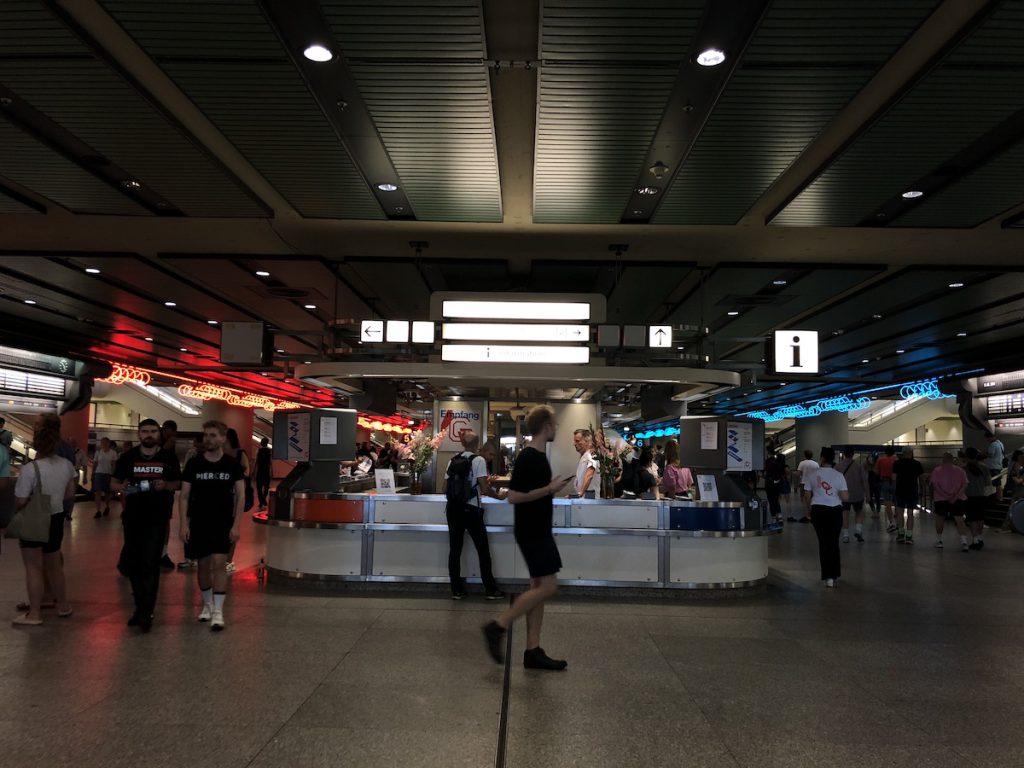
I’d driven by that bizarre building next to the highway many times — usually on the way to the airport — but I had no idea it was capable of time travel.
I got a rare glimpse inside the past future… or future of the past… of the 1970s on this year’s Open Monument Day.
It began the moment we walked through the doors, into a long open stretch where a neon guidance system in brick red and pale blue led us to the strip-lit god at the heart of the machine.
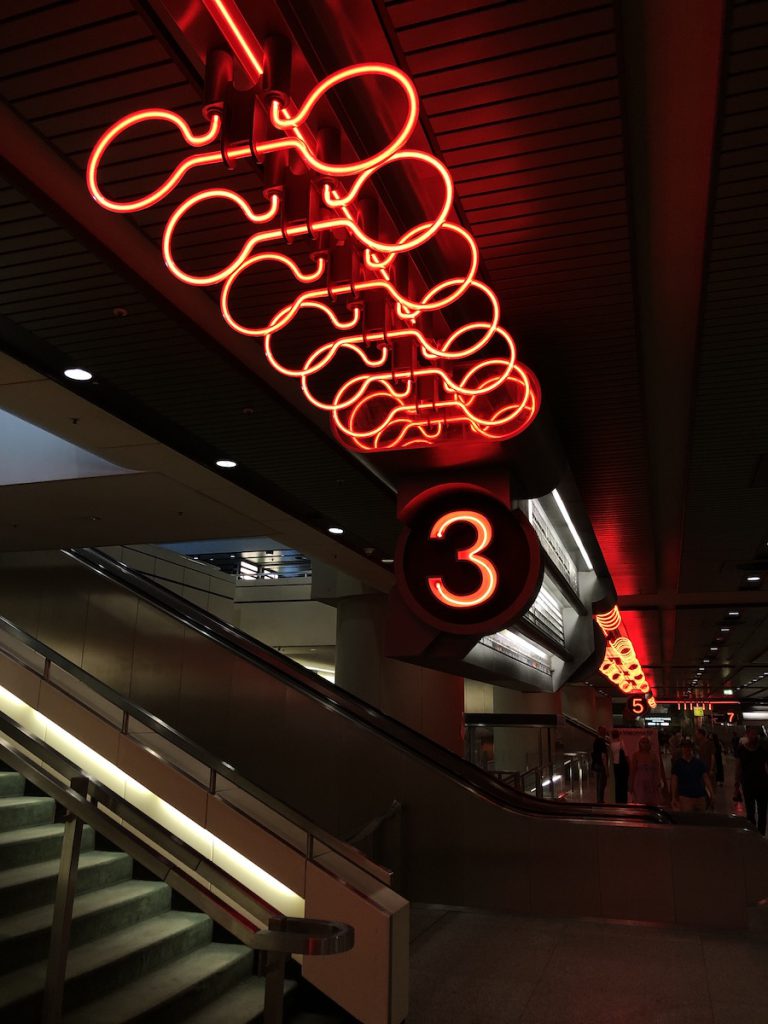
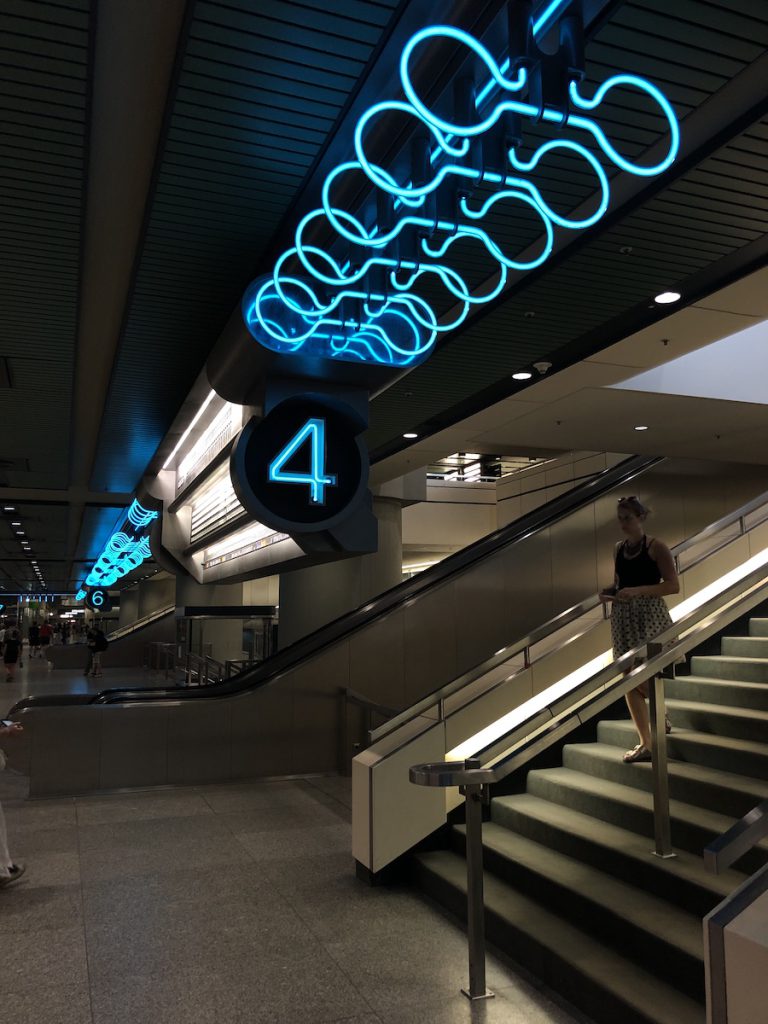
The Brain rises three levels from the ICC control room, transmitting electronic signals to the entire flickering pulsing edifice.
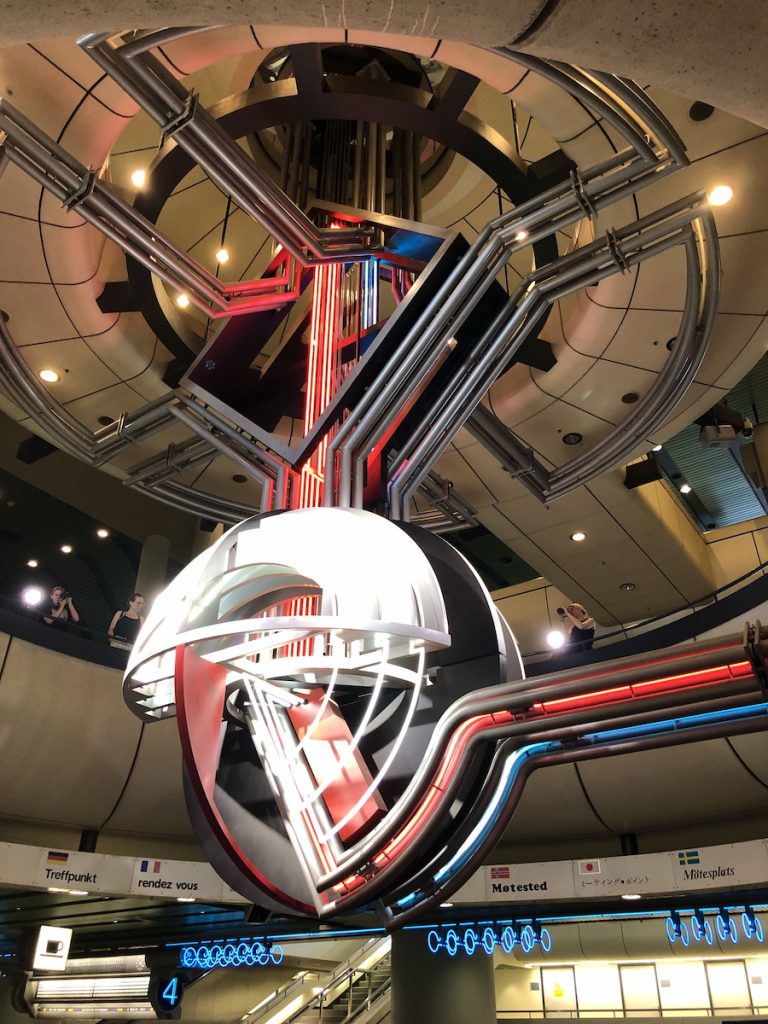
With 12,000 square metres of floor space spread over 80 rooms, the ICC could accommodate 20,000 peoploids discussing whatever it is peoploids will discuss in the year of the Diamond Dogs.
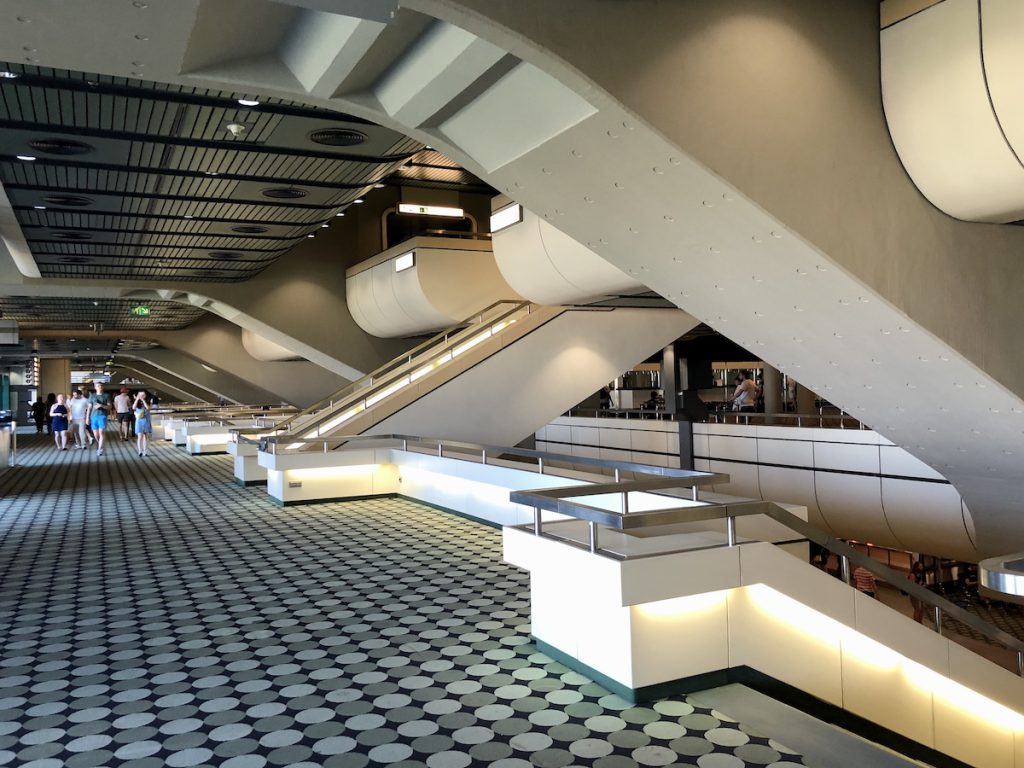
Levels 1 and 2 were the Communication Hub: spacious areas of open movement with discrete clusters of chairs suitable for intimate conversation or heated argument or both. It reminded me of the Zócalo from Babylon Five, that bustling central space where vendors peddled wares and drinks and fan-haired Centari plotted against the Narn.
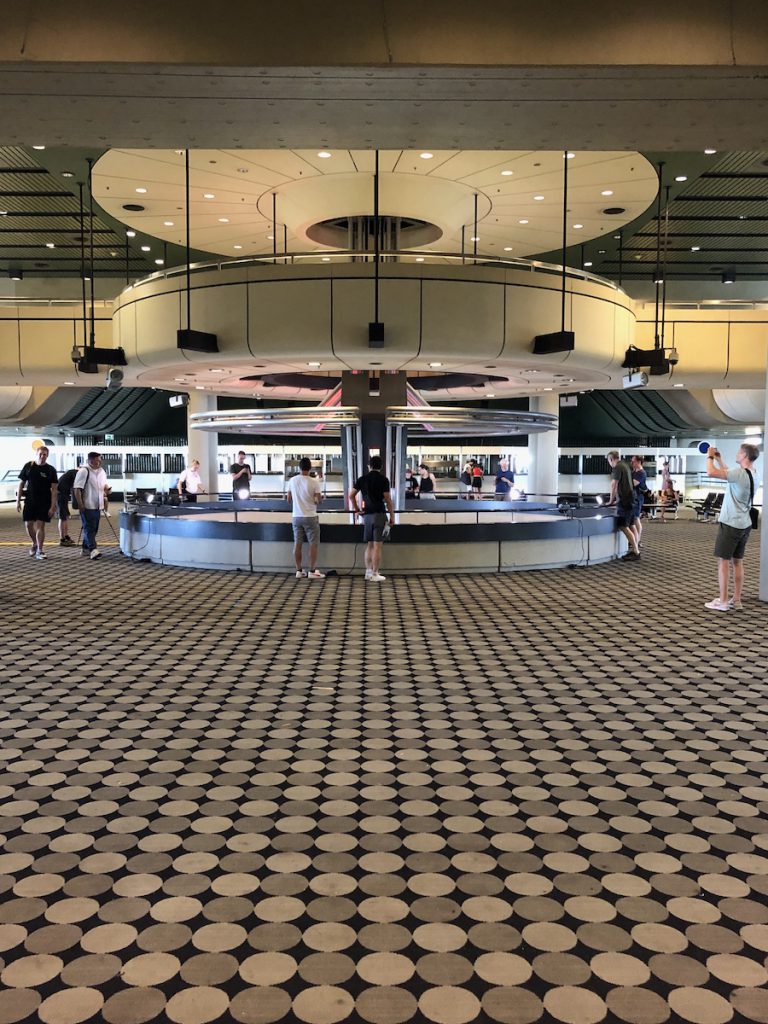
I know I’m at risk of mixing mythical realities, but I really felt like I was on an Imperial Star Destroyer when I was walking down those external corridors next to massive soundproof windows. Only an inability to make the jump to hyperspace prevented me from launching an all-out assault on Naboo and ridding us of that irritating Gungan.
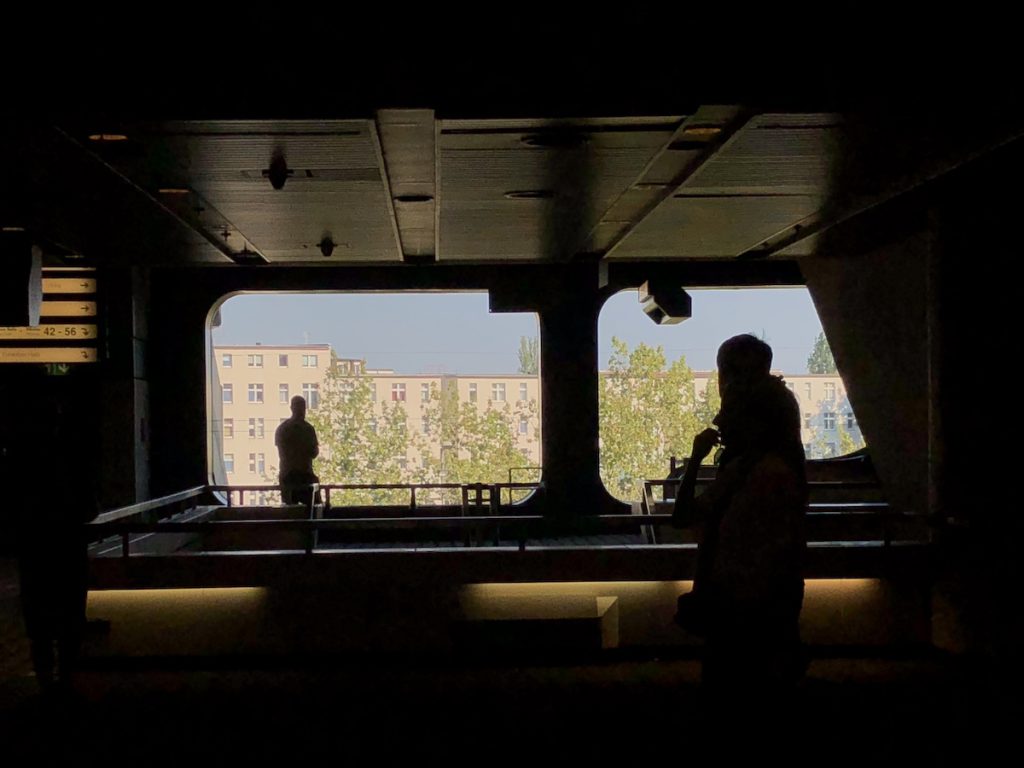
To step into Room 6 is to enter the bridge of a spacecraft. It’s sloping walls, modular ceiling, strange lighting and concentrically-arranged circular seating imbue this windowless room with the atmosphere of interstellar travel.
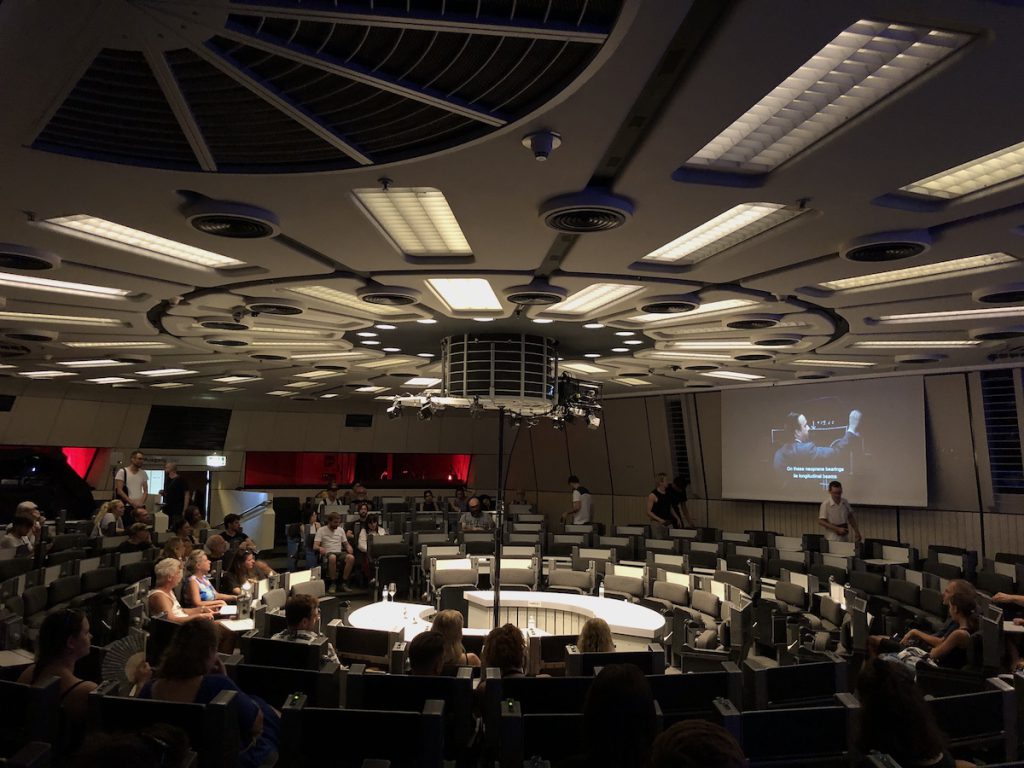
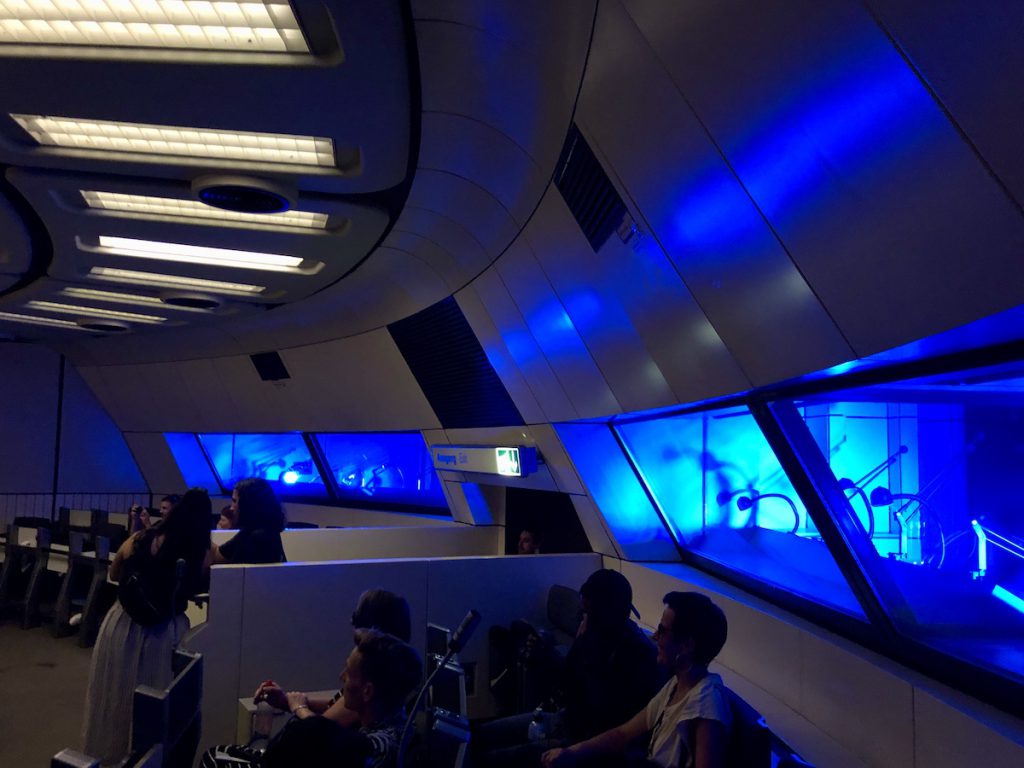
Room 1 is the largest auditorium, with space for 5,000, a wooden stage that could be raised or lowered, and dim glass-fronted booths for simultaneous translation running around the upper reaches of all three sides like futuristic control rooms in a Death Star landing bay.
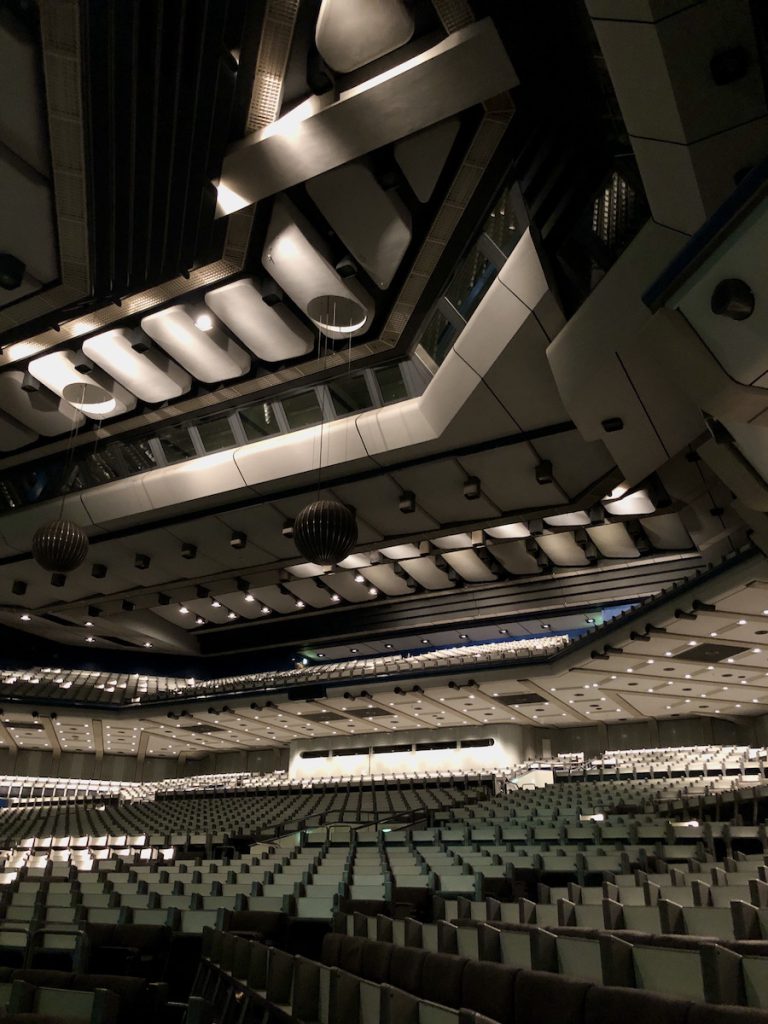
Despite the busy autobahn zipping by the east side of the building, inside that room I couldn’t hear a thing. The outside world — and the past — was completely blotted out.
This unique building may be blotted out, too.
The ICC was quietly retired from service in 2014. It’s too expensive to demolish, too riddled with asbestos to be refurbished, and too enormous to repurpose despite the occasional grandiose development scheme.
Aficionados consider it a Gesamtkunstwerk (total work of art) and want it preserved intact, including its retro-futuristic interior — and I think it should be, both as a Cold War relic and for its unique design.
It was used as an emergency refugee shelter between 2015 and 2017, and a covid vaccination centre, and finally designated a listed building in 2019 — but listing doesn’t mean much in Berlin.
To be viable, the ICC must be in continual use. I can’t see that ever happening. This city is perpetually teetering on the edge of bankruptcy, its rickety infrastructure in a state of semi-collapse. It costs too much to power up this building for a single event and then shut it all down again. And that is a terrible shame.
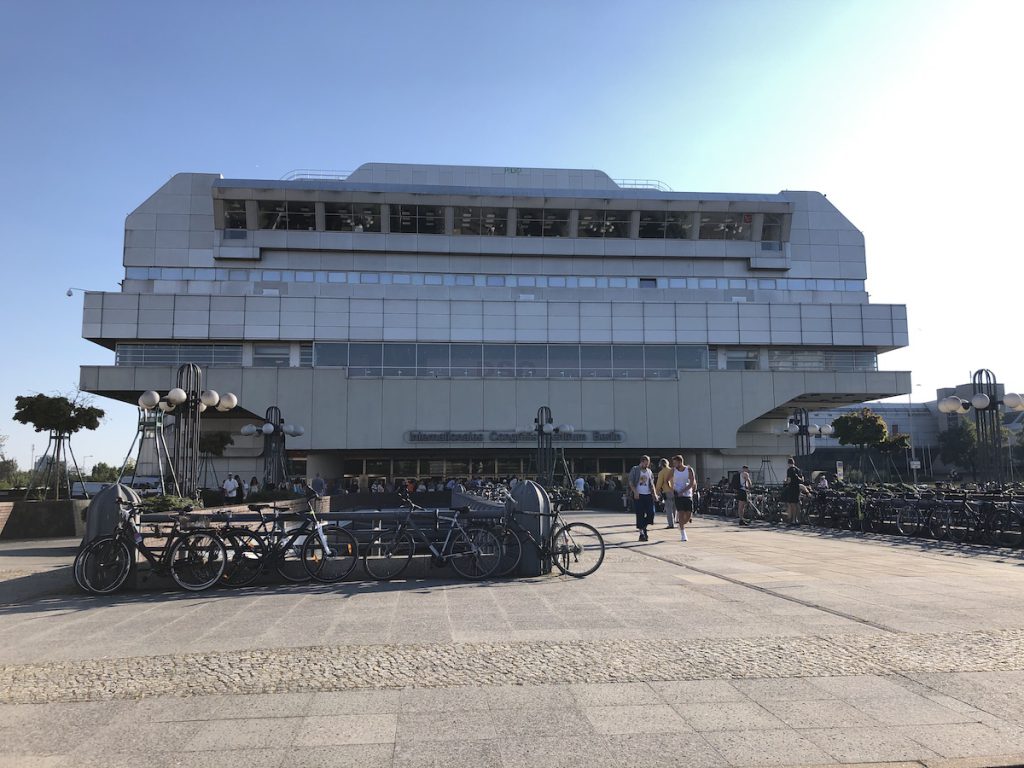
The ICC has aged a lot better than other 1970s trends like bellbottom jeans, enormous lapels and Jell-O salad. Its exterior looks very much of its time, but the interior still looks and feels like the distant future.
The parents of my friends used to talk about the flying cars and food in the form of pills that they expected the 21st century to bring.
Others thought the good clean militarized space communism of Star Trek was the future, with everyone living on Federation (ie. Navy) starships, occupying their allotted slot in colour-coded shirts.
The world of Star Wars with its broken down cities, desert planets and shabby lives on the galactic rim is more my speed.
For each of these disparate groups, the ICC is a slice of that vision brought to life.
Photos © Tomoko Goto 2023
